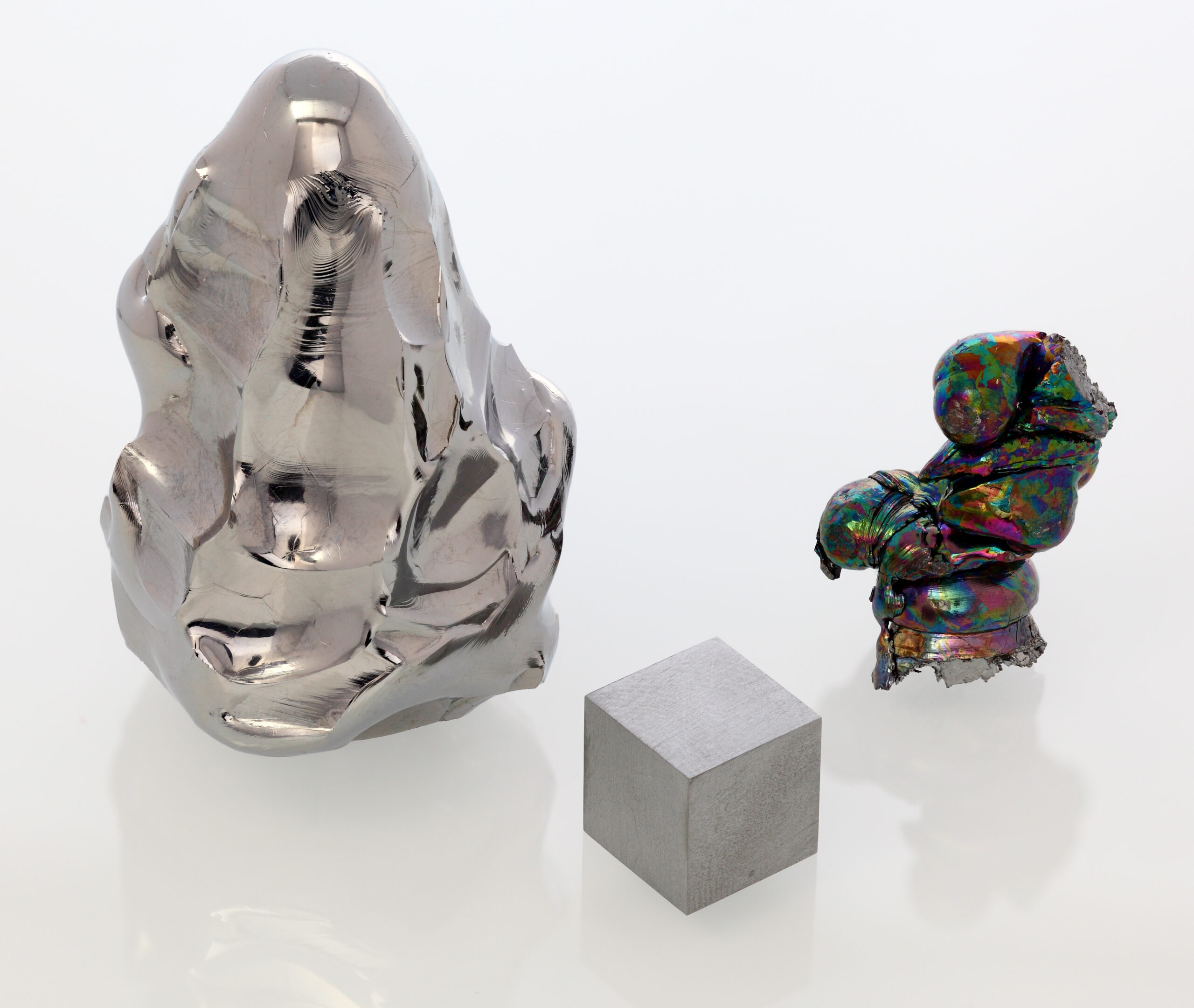Hafnium is a chemical element with the symbol Hf and atomic number 72. It is a transition metal that shares similarities with zirconium.

Here are some key properties of hafnium:
Physical properties of hafnium
- Appearance: Hafnium is a shiny, silvery-gray metal.
- Density: The density of hafnium is about 13.31 grams per cubic centimeter, making it a relatively dense metal.
- Melting Point: Hafnium has a high melting point of 2,233 degrees Celsius (4,051 degrees Fahrenheit).
- Boiling Point: The boiling point of hafnium is 4,603 degrees Celsius (8,317 degrees Fahrenheit).
- State at Room Temperature: Hafnium is a solid at room temperature.
Chemical properties of hafnium
- Reactivity: Hafnium is highly resistant to corrosion and oxidation at room temperature. It forms a protective oxide layer on its surface, similar to zirconium, which enhances its corrosion resistance.
- Oxidation States: Hafnium commonly exhibits a +4 oxidation state, meaning it tends to lose four electrons to form ions (Hf4+).
- Electronegativity: Hafnium has an electronegativity of 1.3 on the Pauling scale, indicating a moderate affinity for electrons.
Mechanical properties of hafnium
- Strength: Hafnium has a high strength-to-weight ratio, making it suitable for structural applications that require strength and low weight.
- Ductility: Hafnium is relatively ductile and can be easily formed and shaped into various shapes and structures.
- Hardness: Hafnium has a moderate hardness, but it can be hardened through alloying and heat treatment processes.
Occurrence and Uses
- Abundance: Hafnium is relatively rare in the Earth’s crust, often found in association with zirconium minerals.
- Nuclear Industry: Hafnium has excellent neutron-absorbing properties, and its alloys are used as control rods and structural materials in nuclear reactors. Hafnium is particularly effective in absorbing thermal neutrons, making it valuable for controlling nuclear reactions.
- Aerospace and Defense: Hafnium is used in aerospace and defense applications due to its high melting point, strength, and heat resistance. It is used in rocket nozzles, turbine blades, and other high-temperature components.
- Electronics and Semiconductors: Hafnium oxide (HfO2) is used as a high-k dielectric material in the production of advanced semiconductor devices, such as integrated circuits and memory devices.
- Superalloys: Hafnium is added to superalloys to improve their high-temperature strength and creep resistance. These alloys are used in gas turbines, jet engines, and other high-performance applications.
- Catalysts: Hafnium compounds can act as catalysts in various chemical reactions, including those involved in petrochemical processes and polymerization reactions.
It’s worth noting that while hafnium exhibits these properties, its specific applications and properties can vary depending on its alloying elements and manufacturing processes.